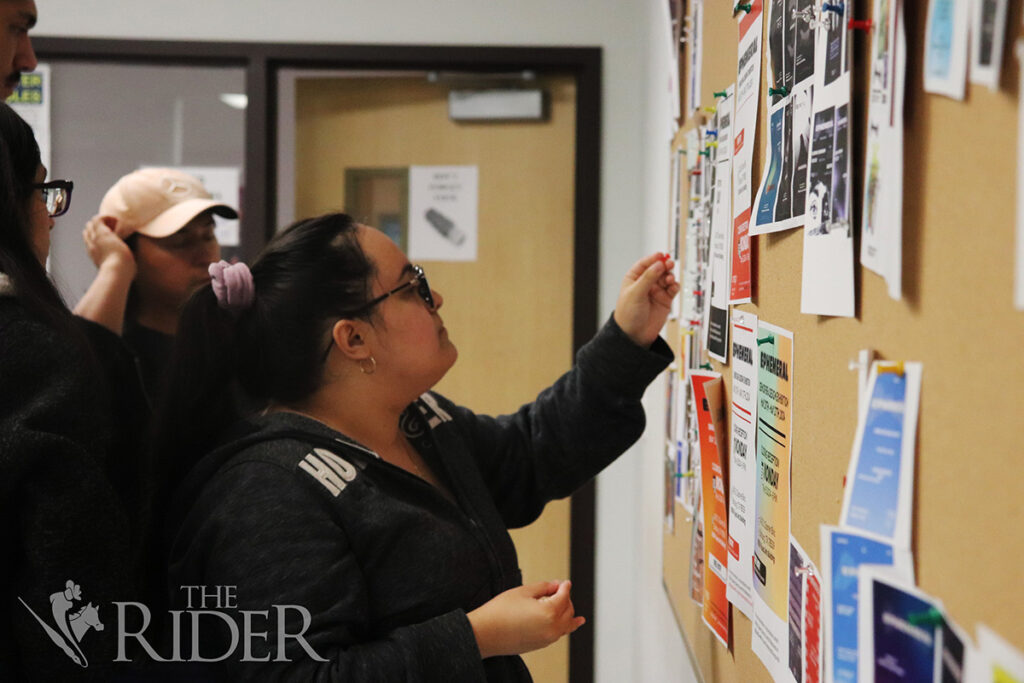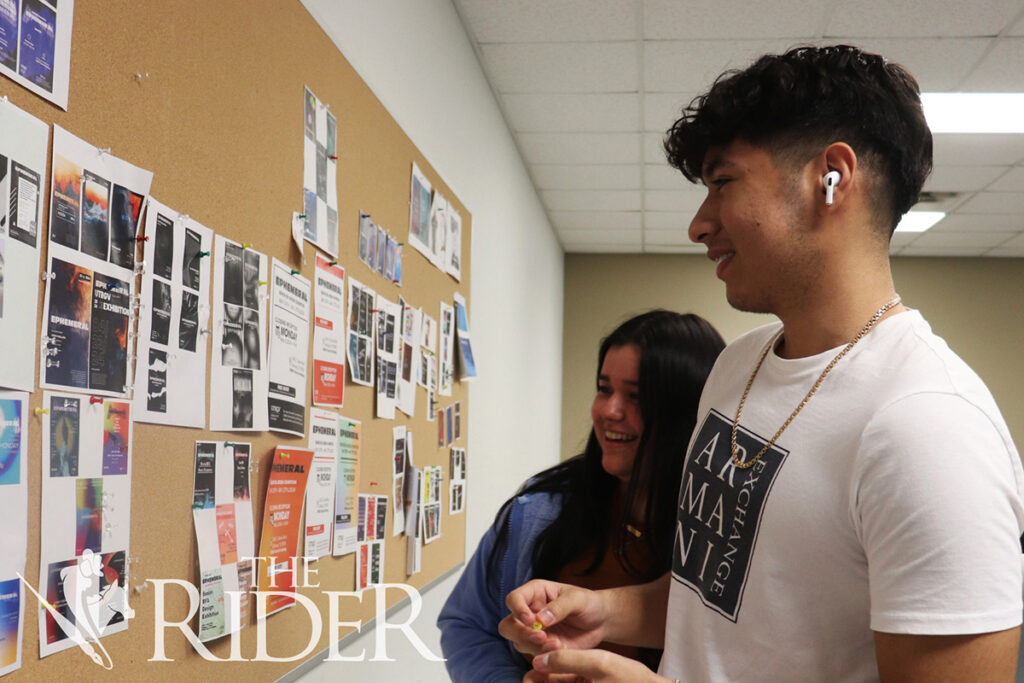
Natalie Lapsley/THE RIDER PHOTOS
Visual Communication Design Capstone, a required course for graduating seniors of the major, has exceeded its 25-student limit with 38 enrolled for the Spring 2024 semester, a UTRGV associate professor says.
Graphic design senior Myrvil Vilchis said there is not enough space for the number of people in the course.
“It’s a little bit of a pain because there’s not too many classes … because there’s not too many professors that are teaching those courses,” Vilchis said.
She said the insufficient number of professors means there are not many times available to create different class sections.
“So, we have to stick to one 8 a.m. class then take a 7 p.m. class, and there’s, like, a huge gap,” Vilchis said.
Robert Gilbert, associate professor of visual communication design, said the interest for visual communication design is growing, and the capstone class has had huge enrollments.
“Last semester, we had 32,” Gilbert said. “This semester, we have 38 students, and we don’t have enough faculty to open a second class.”
He said the committee for measuring the gallery within the class figured out every student will fit in the exhibit, which will open after Spring Break, by slightly adjusting the sizes of their works.
Jeffrey Ward, dean of the College of Fine Arts, said over enrollment can occur for many reasons.
“In upper-division courses, we see over enrollment largely because of students trying to navigate [graduation],” Ward said. “So, we have a really great set of faculty and advisors … who work with the central advising program … to try to best predict what courses students are going to need.
“But, there are times when students will deviate from those [degree] plans … so, that can cause a little bit of a backlog in some courses.”
Ward said over enrollment, particularly in capstone courses, can occur depending on whether students choose to register in the fall or spring semesters.
He said when demand is higher than capacity, an analysis is done to see which students need to graduate that semester. This year, however, priority was not given because all 38 students needed the course to graduate.
Ward said a previous solution employed in the past in response to the lack of exhibit space was to extend the gallery into the hallway in the Edinburg Visual Arts Building.
Vilchis said it is not fair that there is little time to prepare for the exhibition.
“It’s basically the work of your entire life here in college,” she said. “… It’s quite a struggle because we have to plan everything.”
Gilbert said the exhibit could not be pushed to a later date because the Visual Arts Gallery will be in use by other students.
Ward said finding faculty for the visual communication design major is challenging because of the smaller pool of options in the Rio Grande Valley.
He said opening class sections is an issue this semester because of a resignation last year, and the college was not able to identify a candidate.
“So, we’re doing a search again, and the committee has communicated to me that they feel very confident about that search,” Ward said. “Hopefully, next year, we will see less of overloads in [visual communication design] because of more personnel that we have at our disposal.”
Vilchis said she is upset at the university’s response to the problems that have ocurred within the College of Fine Arts.
“I think that communication with students … it should be No. 1 priority for this university,” she said. “The solutions are probably not as easy. … I believe that certain things can be made with providing more money to the department or even helping students with [normal solutions], like, with timing.”

Natalie Lapsley/THE RIDER PHOTOS






